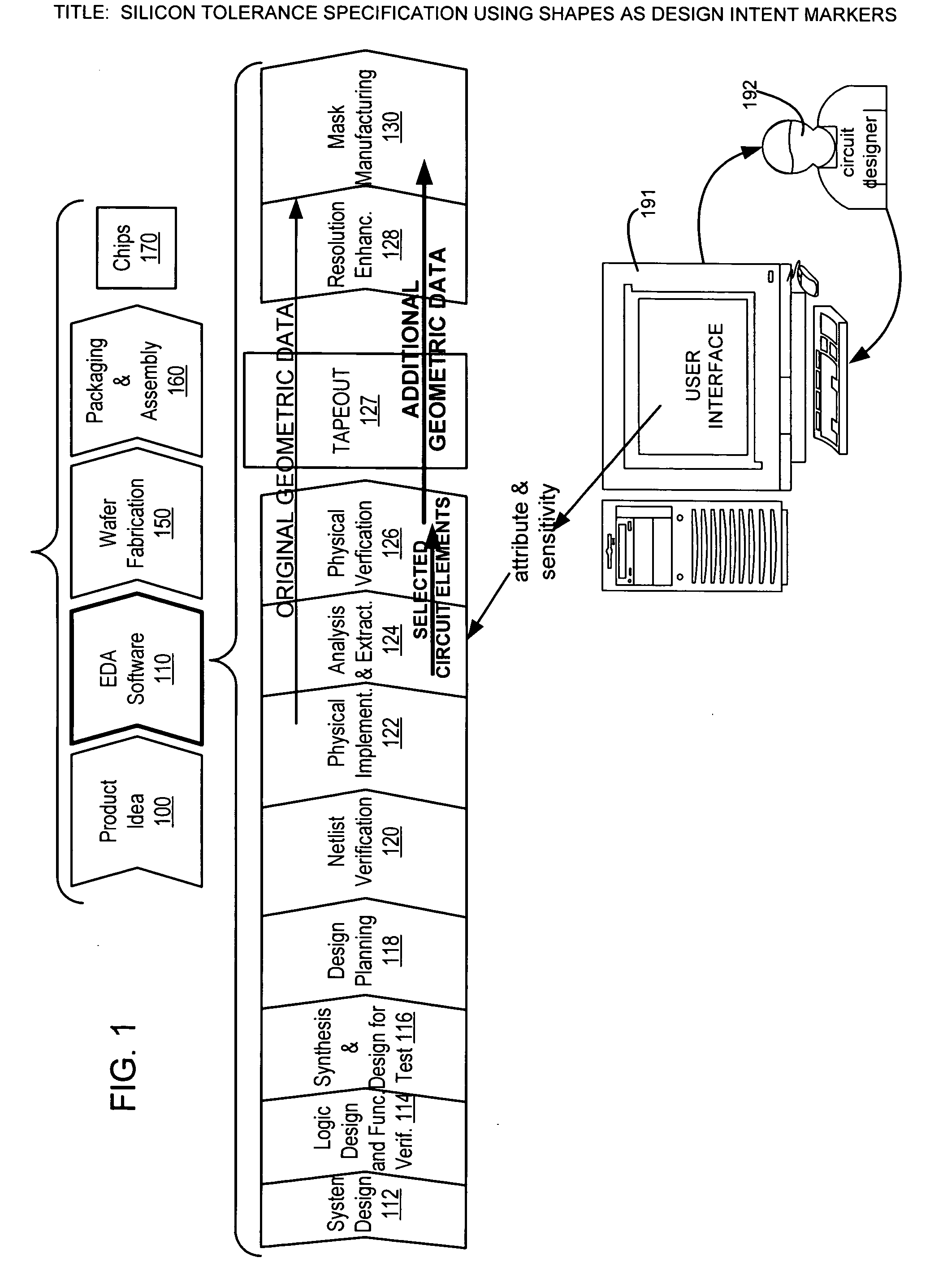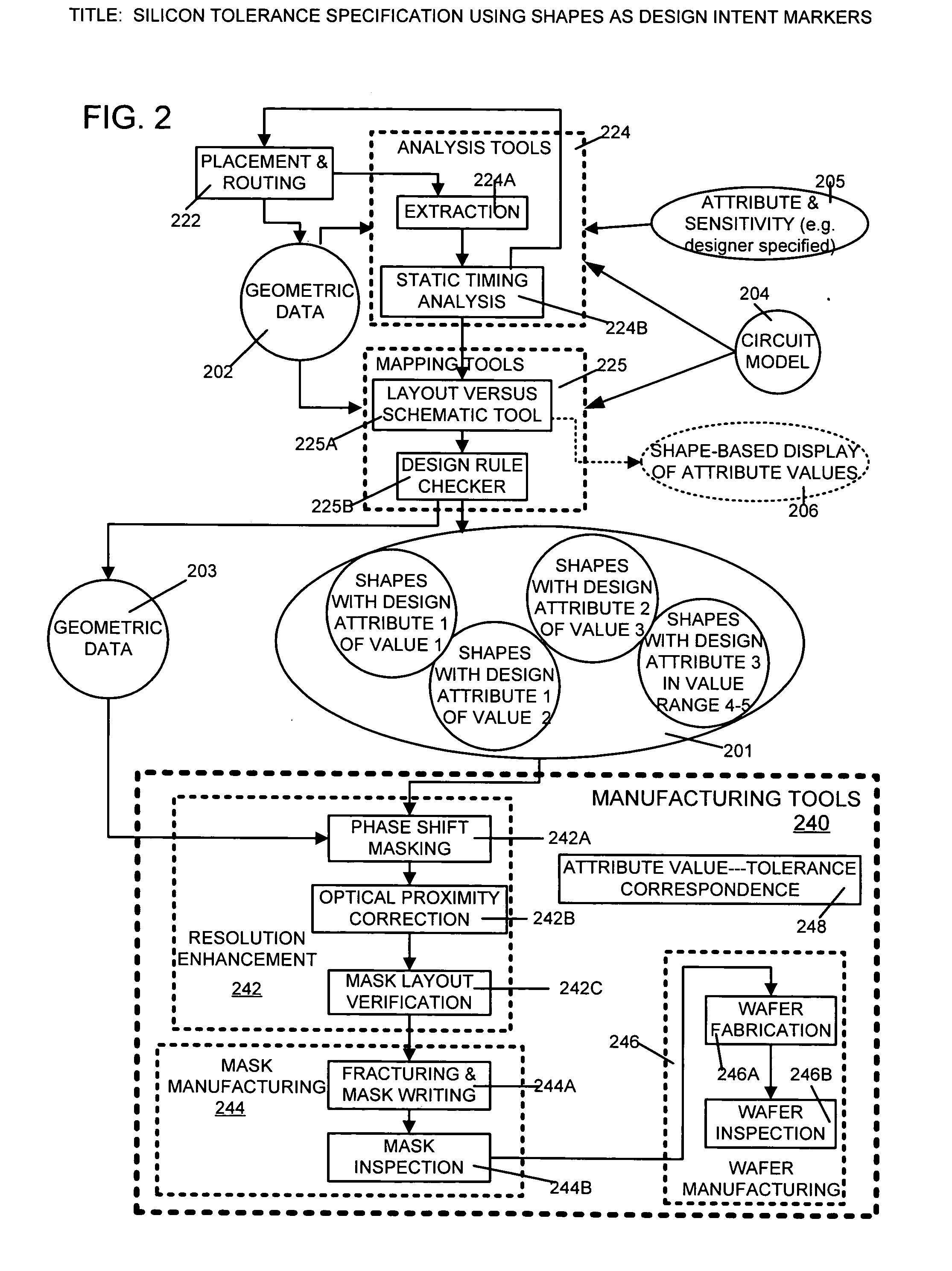Silicon tolerance specification using shapes as design intent markers
a technology of design intent and silicon, applied in the direction of instrumentation, program control, cad circuit design, etc., can solve the problems of not being aware of which shapes are critical and which are non-critical, and the amount of opc features inserted could be dramatically reduced, so as to improve yield and/or cost
- Summary
- Abstract
- Description
- Claims
- Application Information
AI Technical Summary
Benefits of technology
Problems solved by technology
Method used
Image
Examples
Embodiment Construction
[0026] At a high level, a process for creating integrated circuit chips starts with a product idea 100 (FIG. 1) and is realized in a EDA software design process 110. After the EDA software design process, a fabrication stage 150 and packaging and assembly processes 160 occur resulting, ultimately, in finished chips (result 170). EDA software design process 110 is actually composed of a number of stages 112-130, shown in linear fashion for simplicity in FIG. 1. In an actual ASIC design process, the particular design might have to go back through steps until certain tests are passed. Similarly, in any actual design process, these steps may occur in different orders and combinations. This description is therefore provided by way of context and general explanation rather than as a specific, or recommended, design flow for a particular ASIC. A brief description of the components of the EDA software design process 110 is provided below, in the next few paragraphs.
[0027] System design (st...
PUM
 Login to View More
Login to View More Abstract
Description
Claims
Application Information
 Login to View More
Login to View More - R&D
- Intellectual Property
- Life Sciences
- Materials
- Tech Scout
- Unparalleled Data Quality
- Higher Quality Content
- 60% Fewer Hallucinations
Browse by: Latest US Patents, China's latest patents, Technical Efficacy Thesaurus, Application Domain, Technology Topic, Popular Technical Reports.
© 2025 PatSnap. All rights reserved.Legal|Privacy policy|Modern Slavery Act Transparency Statement|Sitemap|About US| Contact US: help@patsnap.com



